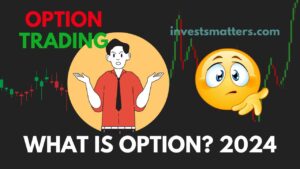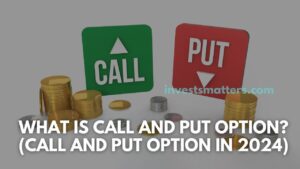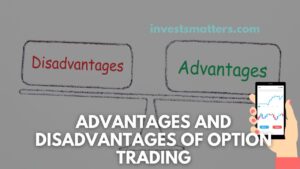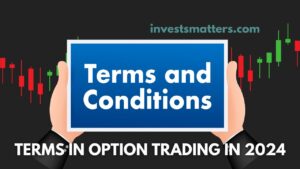option trading in hindi 2024: Engaging in share market trading through a strategic approach has proven to be a lucrative endeavour for seasoned traders, enabling them to amass substantial wealth within mere minutes. This trading methodology is gaining rapid popularity within the Indian market as well. By adopting an effective option trading strategy, one can enhance their financial gains within the dynamic realm of the stock market.
The stock market serves as a promising arena for wealth creation, provided one dedicates effort to mastering the appropriate trading strategies. Conversely, failure to do so can lead to financial ruin, making the stock market a perilous ground for the ill-prepared. Thus, it is imperative to channel efforts into acquiring knowledge and gradually establishing a solid foundation within the market. This deliberate approach ensures a more secure and informed participation in the ever-evolving world of share market trading.
What exactly is option trading? (Understanding Options Trading in 2024)
To grasp the intricacies of options trading, one must first comprehend derivatives. Derivatives, in essence, lack intrinsic value and derive their worth from other assets. Let’s illustrate this with an example – much like investing in paper assets.
Paper assets, such as bonds, are where we allocate our funds. Now, what is the inherent value of a bond? Its value hinges on the assurance provided by the issuer. Bonds possess value because of this guarantee, often backed by the government. This characteristic categorizes them as derivatives, as their value is contingent on external factors. Think of gold as another example of a derivative.
So, having understood derivatives, let’s explore their connection to options. An option is essentially a derivative, devoid of inherent value. Its worth is reliant on external factors. Just as bonds derive value from the issuer’s guarantee, options derive value from the underlying assets they are associated with. This establishes options as a subset of derivatives with a distinctive mechanism that hinges on the fluctuating dynamics of their underlying assets.
What is option? (what is an option)

Now that we have delved into the concept of options, it’s crucial to recognize that an option is essentially a derivative. The value of an option is intricately tied to the performance of the underlying asset. Let’s elucidate this concept with a practical example.
Imagine you visit a store intending to purchase a new mobile phone. You find a phone you like, inquire about its price, and the shopkeeper quotes it at Rs. 20,000. However, you desire the phone in a specific green colour, which is not currently available. The shopkeeper assures you that the green variant will be in stock the following week.
Here’s where options come into play. Concerned about a potential price increase due to the phone’s popularity, you decide to secure your purchase by paying a token amount of Rs. 2,000. This ensures that, regardless of any future price hike, you will be able to acquire the phone for the agreed-upon Rs. 20,000.
A week later, you return to the shop only to find out that the green smartphone is now priced at Rs. 16,000, reduced from the initial Rs. 20,000. The shopkeeper attributes this reduction to a Diwali sale and the launch of a newer model.
Now, you face a decision. You could either proceed with the purchase at the previously agreed-upon price of Rs. 18,000 (after the token payment), incurring a loss of Rs. 4,000, or you could opt to forego the token, paying the new price of Rs. 16,000 and incurring a loss limited to the token amount of Rs. 2,000.
In a prudent move, you decide to abandon the token and purchase the smartphone for Rs. 16,000. In this scenario, it becomes evident that irrespective of your choice, the shopkeeper remains the beneficiary. However, had the phone’s price risen from Rs. 20,000 to Rs. 25,000, your foresighted token payment would have saved you from the increased cost.
This analogy mirrors the workings of options trading in the real world. When you anticipate a company’s stock to rise, you can invest in it by acquiring a call option. The money invested in purchasing the option is referred to as the premium, mirroring the token amount in our example.
What is Call and Put option? (Call and Put Option in 2024)

Let’s break down Call and Put options in simple terms. A Call option is like a ticket that says, “I want to make money if the stock goes up.” On the other hand, a Put option is a ticket that says, “I want to earn money when the stock goes down.”
Imagine you’re looking at a share priced at $100. If you believe it will go up to $150 in the next two weeks, you might get a Call option. If, after a week, the share goes up to $160, your Call option makes you money because your prediction was right. But if the share falls below $100, you might lose with the Call option.
Now, if you had a Put option instead, you would make money if the share went down. So, Call options are for making money when stocks go up, and Put options are for making money when stocks go down. Understanding this helps you make smarter choices in the stock market.
What is Option Buying and Selling?
Let’s talk about Option Buy and Sell in simpler terms. When we say “Option Buy,” it means you’re purchasing options. If you buy a Call option, you make money when the stock goes up. If it’s a Put option, you profit when the stock goes down. On the flip side, Option Sell involves selling options. If you sell a Call option and the stock goes up, you lose money. But if the stock falls, you can make a profit.
Now, let’s clear up the concepts of In the Money, At the Money, and Out of the Money. In the Money is like when a share is Rs 100, and you buy an option for Rs 60. At the Money is when the stock is Rs 100, and you get an option for Rs 110. Out of the Money is when the stock is Rs 100, and you invest in an option for Rs 150.
If these concepts seem a bit tricky, take your time to learn more. Watch videos on platforms like YouTube and consider reading some beginner-friendly books. Gradually, you’ll understand the ins and outs of option trading. Remember, option trading can be risky, so make sure to learn before you start.
What is the difference between Option Buying and Selling?
Let’s talk about the difference between buying and selling options in simpler terms.

When you buy options, you have the potential to make a lot of profit, but the risk of losing money is limited. The most you can lose is the premium you paid to buy the option.
On the other hand, when you sell options, your profit potential is limited, but the risk of losing money is not capped – it could be unlimited. It’s worth noting that experienced individuals often engage in option selling and tend to earn more.
While option buying may seem appealing due to its unlimited profit potential, it’s common to see losses. Option selling requires a good amount of money, which might be a deterrent for some. It’s important to consider these aspects and recognize that expertise plays a role, especially for those selling options. So, keep these points in mind when exploring the world of option trading.
How option trading works (how works option trading in 2024)
Option trading is like having a choice to buy or sell a share in the future. It helps us avoid confusion about whether to buy a stock right away or not. We also get to decide if we want to take part in a trade or not, giving us the flexibility of choice – that’s why it’s called option trade.
In simple terms, option trading lets us plan our trades with future events in mind. Remember, trading options for a shorter time is usually less expensive than doing it for a longer period. This is because shorter investments often have more favourable prices. Keep this in mind when deciding on your trading strategy.
Types of option trading in 2024 (Types of option)
In option trading, two types of options give traders flexibility rather than obligations. These are Call Option and Put Option, allowing traders to make decisions based on their preferences.
- Call Option
- Put Option
Call Option: When you use a Call Option, it means you believe a share or security’s price will go up in the future. It’s like making a deal with a seller where, if the price goes up, you can buy at the original lower rate. If the price falls, you can choose not to buy, and the seller must follow your decision. You only lose the premium you paid.
This type of option is useful in different markets, like stocks or Forex, offering a chance for potential profit.
Put Option: The second option is the Put Option, designed to help buyers sell a security in the future. If you think a share’s price will decrease, you can use a Put Option. For example, if a share is Rs 50 now, but you expect it to be Rs 30 in the future, you can sell it at a higher price using the Put Option. If prices go up, you can decide not to go through with the contract without any obligation.
Both Call and Put Options give traders the freedom to navigate the market based on their assessments and predictions.
Advantages and Disadvantages of Option Trading (Profit and Losses in Option Trading in 2024)

Option trading is a great choice for traders in any market, letting them make profits while minimizing losses. Let’s explore the pros and cons of option trading.
On the positive side, option trading allows traders to adapt their positions to market changes. This flexibility is useful in both rising and falling markets, making trading strategies more dynamic.
Moreover, option trading acts as a tool for managing risk. It helps limit potential losses while still keeping the door open for gains, making it an appealing strategy.
However, there are challenges to consider. Understanding option trading and its strategies can be a bit tricky, especially for beginners. It might take a while to understand it fully.
Another thing to keep in mind is that options have expiration dates. Timing is crucial, and traders need to stay aware of market trends to make timely decisions.
Benefits of Option trading in 2024
Let’s look at the benefits of options trading:
- The key advantage is that it’s not mandatory to take action. You have the freedom to decide whether or not to proceed based on your expectations of potential gains.
- Another significant benefit is the ability to initiate future trades on the current date without paying the full amount. Instead, you only need to deposit a non-refundable premium. This lets you capitalize on your predictions about future share price movements.
- The structure of option trading reduces the risk of complete loss. When you trade with options, you only deposit margin money, known as the premium. If a trade doesn’t turn profitable, your loss is limited to this margin payment.
- Options trading provides a versatile investment opportunity, allowing you to invest in various sectors like Forex, Gold, Silver, Index, or Commodities. This flexibility offers diverse and potentially profitable investment choices.
- Notably, option trading works well in both rising and falling markets. This flexibility means you have the chance to make profits regardless of market direction.
Losses in option trading 2024
Every activity has its positives and negatives, and the same goes for option trading. Let’s look at the downsides:
- Firstly, in options trading, you’re dealing with a bunch of shares, not just one. This means higher premiums, and if your trade doesn’t go well, you might end up losing that premium.
- Taxes add to the cons of option trading. Short-term capital gains tax is usually higher than the long-term one, resulting in more taxes paid to the government.
- Options trading is designed for short-term deals. Long-term investments don’t work here, limiting how long you can keep your trades.
- The rules and strategies in option trading are different from other types of trading. If you don’t fully understand them, it’s better to stay away. Options trading can be quite risky without proper knowledge.
- Another drawback is the higher brokerage charges compared to regular trading. This means you’ll pay more in commissions to the broker, affecting your overall profits. Also, trading options without sufficient knowledge can be quite risky, so it’s important to be cautious. Don’t rely on trading tips from inexperienced people.
Terms in option trading in 2024

In option trading, we often encounter specific terms that play a vital role in making informed decisions. Let’s explore these terms in simple terms:
Premium: When you engage in option trading with either a put or call option, you need to deposit some money called the premium. This amount is non-refundable, signifying a commitment to the trade.
Expiration Date: Every option comes with an expiration date, indicating the period during which the option remains active. Once this date passes, the order becomes invalid, emphasizing the time-limited nature of options.
Strike Price: The strike price is like an agreement between a buyer and a seller. It’s a fixed price, decided at a specific time, serving as the agreed value for the underlying asset in the transaction.
Stock Symbol: The stock symbol identifies the stock for which the option is traded. Whether it’s related to Nifty shares or any other stock, this symbol helps specify the asset involved in the option trade.
Conclusion: option trading in hindi 2024
In today’s blog, we explored the concept of option trading. We discussed how it operates, its pros and cons, and the different types of options available. It’s important to have a good understanding of option trading to reap its benefits, as a lack of knowledge can lead to significant losses. As you venture into this area, make sure to equip yourself with the necessary insights to enhance your chances of success and minimize risks.
People also ask:
How can I learn options trading in India?
To learn options trading in India, begin by gaining knowledge through accessible resources. Attend workshops, take online courses, and use virtual trading platforms for hands-on experience. Stay updated on market trends and continuously refine your strategies through practical trading.
What is option trading in simple terms?
Option trading, in simple terms, involves buying and selling financial contracts (options) to capitalize on market movements. These contracts provide the right, but not the obligation, to buy or sell an asset at a predetermined price within a specified time frame.
Can I start option trading with 1000 rupees?
Starting option trading with 1000 rupees is possible, but it comes with limitations. Be aware of the risks involved, as this amount may restrict your ability to diversify and manage potential losses effectively.
Is option trading easy for beginners?
Options trading might be difficult for beginners because it’s quite complex. While the basics are understandable, mastering the nuances, strategies, and risk management requires time, education, and practical experience.
Are options high risk?
Yes, options trading is considered high-risk. The involvement of leverage amplifies both potential gains and losses. Traders should exercise caution and employ risk management strategies to mitigate inherent risks.
Is Option Trading good or bad?
Whether option trading is good or bad depends on individual circumstances, risk tolerance, and knowledge. While it offers profit opportunities, it also involves risks. Proper education, strategic planning, and discipline are essential for success.
Can I succeed in option trading?
Success in option trading is achievable with a thorough understanding of the market, continuous learning, and disciplined execution of well-thought-out strategies. Dedication, risk management, and adaptability to changing market conditions are key.
Who is the richest option trader?
Identifying the richest option trader is challenging, as wealth fluctuates and is often private. Successful traders, such as Warren Buffett and George Soros, have achieved significant wealth through various investment strategies, including options.
Who is the best option trader?
Determining the best option trader is subjective and can vary based on individual preferences. Some well-known and successful option traders include John Carter, Larry McMillan, and Tony Saliba.
Can options trading make you rich?
Well, it’s not easy to say definitively, but some people have achieved wealth through it. Your success depends on how well you understand the subject.
How long does it take to learn options trading?
Learning options trading might take about 2 years. You can gather knowledge from videos or courses, but practical trading experience is crucial for true understanding. That’s why it’s suggested to dedicate at least 2 years to the learning process.
How much can you earn by selling options?
Selling options can bring in money, but there’s a limit to the profit you can make. While it provides a steady income, the profit potential is constrained within certain limits. It’s important to know that option selling offers a reliable but capped income.



